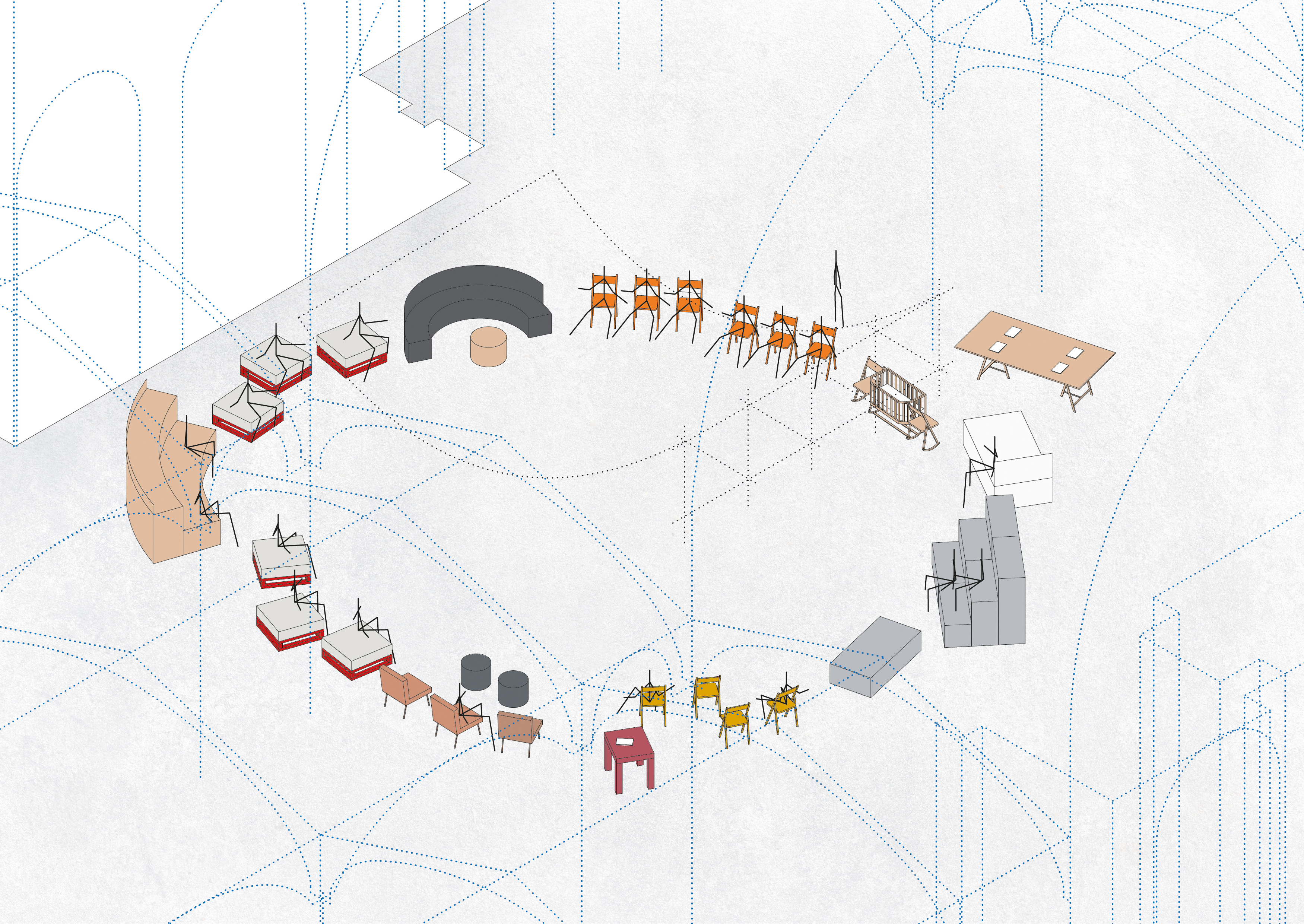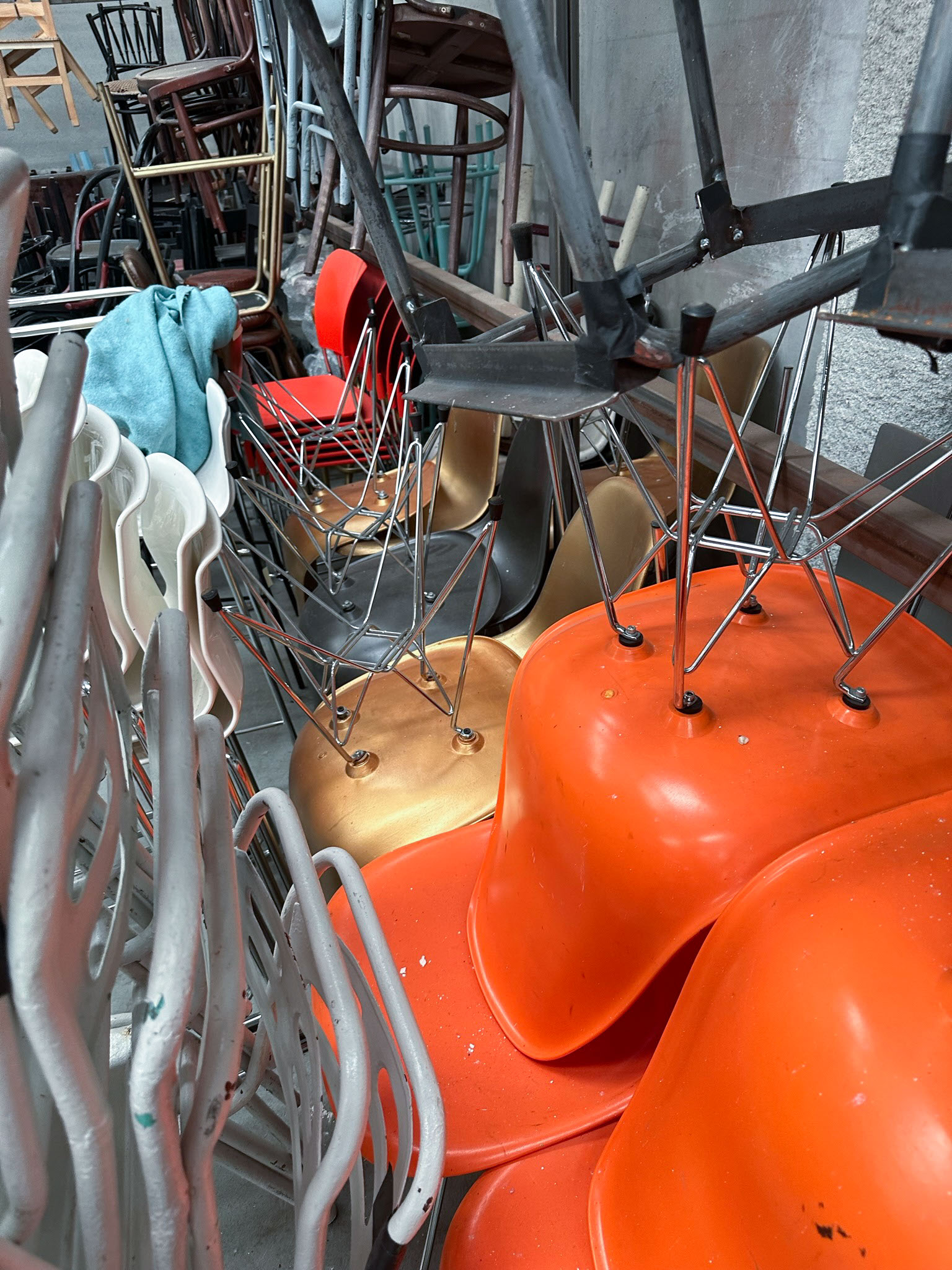> Re-existencias bayanihan
Museo Nacional Centro de Arte Reina Sofía
Madrid, 2023
This project involves temporarily adapting the
interior of the Velázquez Palace for non-exhibitory uses: as a relaxation
space, to host reading sessions, performances, and other activities under the “Apuntes”
initiative of the MNCARS. “Apuntes” was conducted in the second semester of
2023 and revolved around the concept of “time”. As
northern Andean
migrant architects
living in Madrid, the Velázquez Palace, with its colonial history (it served as
the main venue for the Philippine Exhibition in 1887, which was then part of
the Spanish empire), holds a special personal and professional significance for
us. In response to the central theme of “Apuntes”, we proposed a space that
would foster a dialogue between the activities to be held in the palace and the
colonial eras that permeate this building, many of which are still relevant
today.


Building on this, we have proposed two actions. One
involves creating a hanged sign that names this temporary space and invites
reflection on the building's history. The other involves repurposing old stage
sets from the National Dramatic Center's warehouses to furnish the space for
its various uses. The name and its sign is a work that we have developed in
collaboration with writer Karessa M. Ramos and artist Nayare Soledad Otorongx,
cultural agents in Madrid linked to the Filipino and Abya Yala diasporas. Regarding
the colonial times, it is important to recognize two things: first, that these
times are not only a matter of the past but continue to be relevant today.
Second, for the colonized communities, these times have represented not only a
period of oppression but also one of resistance and collective reinvention,
even in adversity.
For
the name, we have proposed “Re-existencias bayanihan”. “Re-existencias” is a
concept by Adolfo Albán Achinte, an Afro-Colombian decolonial artist and
thinker, which invites us to think beyond the resistances associated with
coloniality, considering the alternative forms of existence that communities
construct despite those imposed on them.


“Bayanihan”
is a Tagalog term that, in The Philippines, speaks to the house as a collective construction and to
community action in general. It refers to the shared character of re-existences
that have historically occurred and continue to occur in the Spanish territory
by many individuals linked to diasporas from colonized territories. Additionally,
we believe this temporary sign might spark a broader future conversation about
alternative ways in which this building could be named and described more
permanently; possibly problematizing its past and opening possibilities for
other futures. Our intention is for “Re-existencias bayanihan” to function
simultaneously as an open text that, beyond coloniality, invites imagining
other ways of existing and being together both inside and outside this space.










Regarding the reuse or recycling of stage sets, it involves giving a new purpose to objects typically used temporarily, working from a more responsible and circular material management perspective. It also involves questioning an understanding of the concepts of “time” and “us” in the design processes that, from our perspective, tends to be narrow, and understanding the work of design through a broader “us”, constructed over an extended period. In this case, it is a time that articulates alongside the different designers of the sets that, once recycled, participate in the project, as well as the gathering of a poet, an artist, and architects to design the name of this space.
For
each of the scenic pieces, we prepare a label with information about its
designer, the theater production in which it was used, and its authors, as well
as a QR code to access more information about it. The sign is accompanied by a
cover that redraws the monumental geometry of the palace's interior, fostering
a domestic and approachable atmosphere.
This
proposal worked closely with a proposal of decolonial actions for the “Apuntes”
program, which was developed and coordinated by Abdiel Segarra and Karessa M.
Ramos, alongside Husos, among others.









